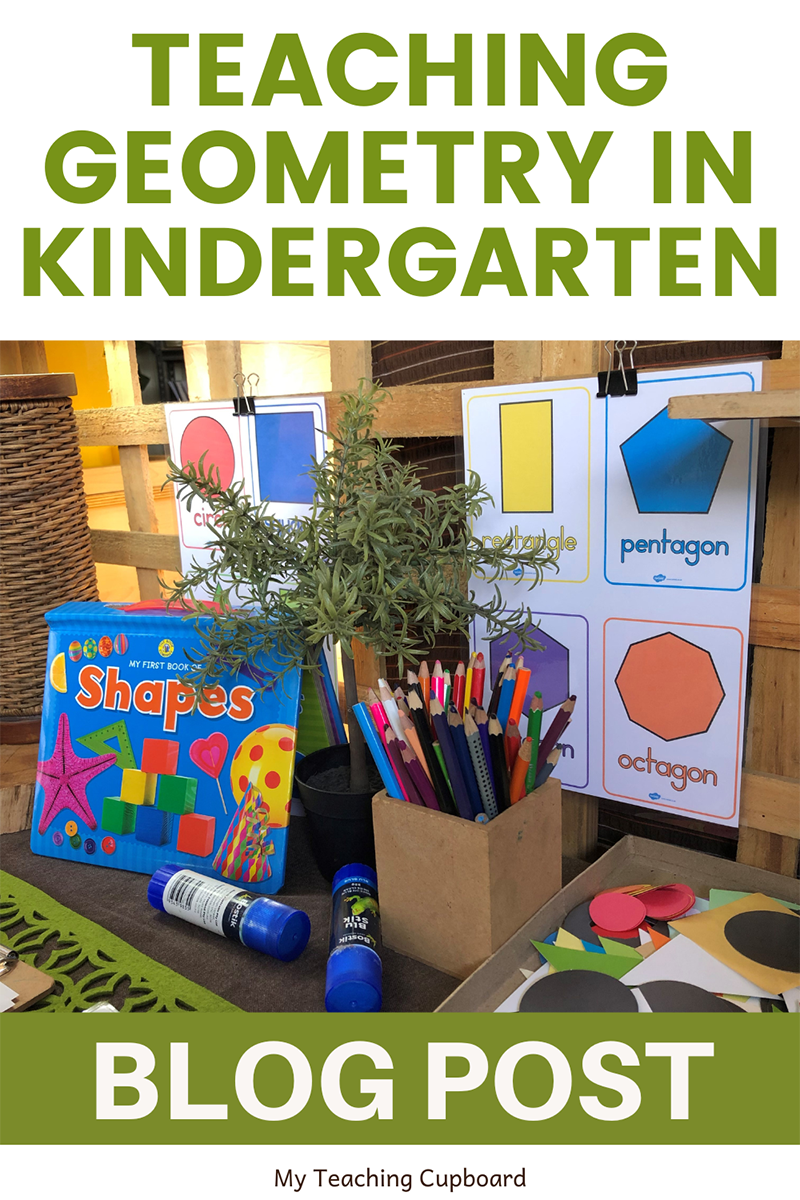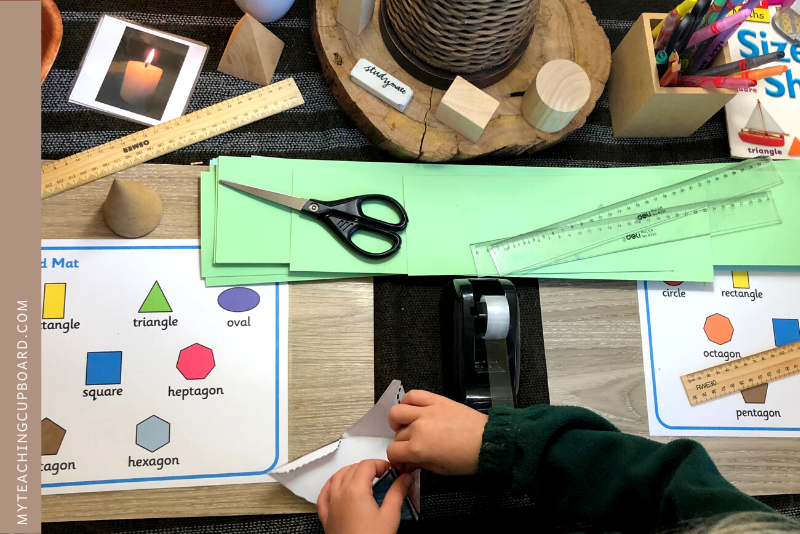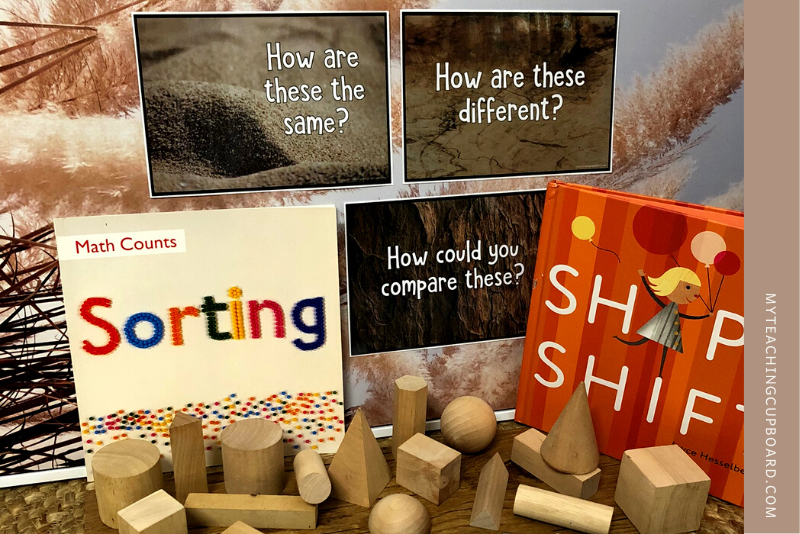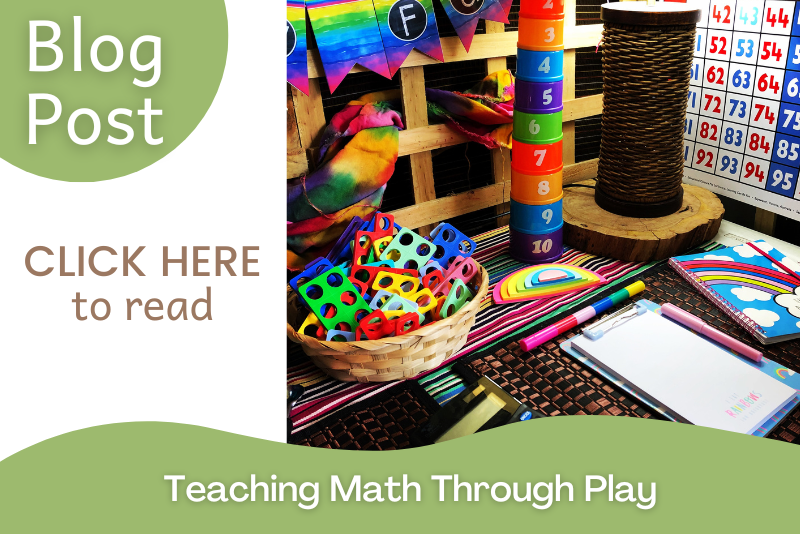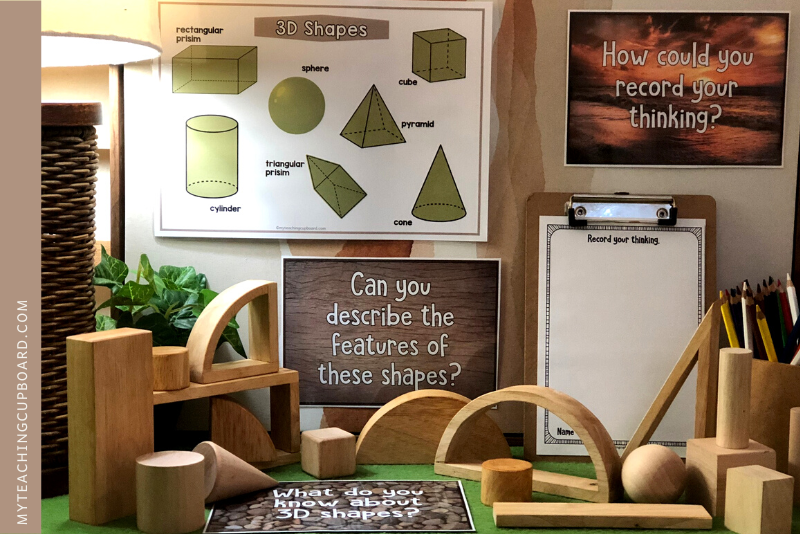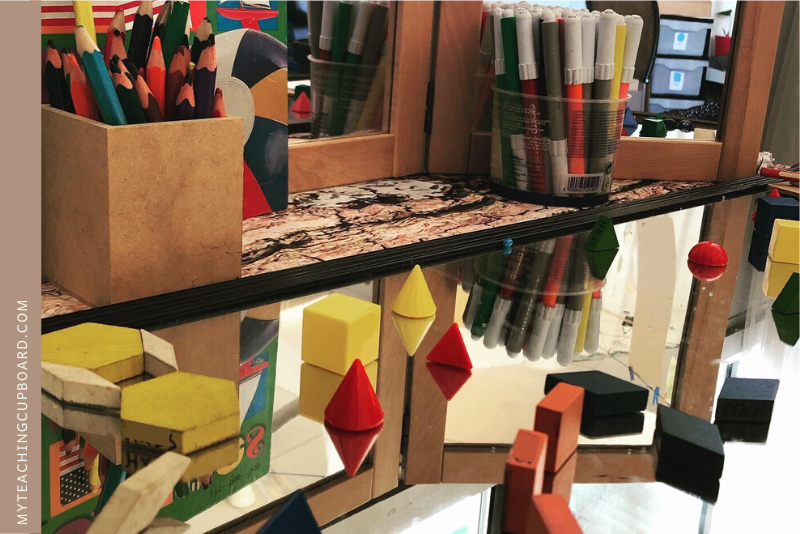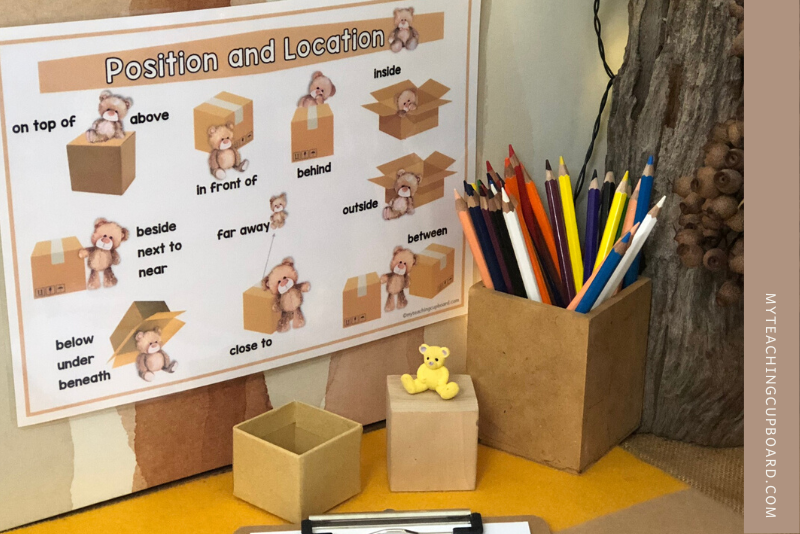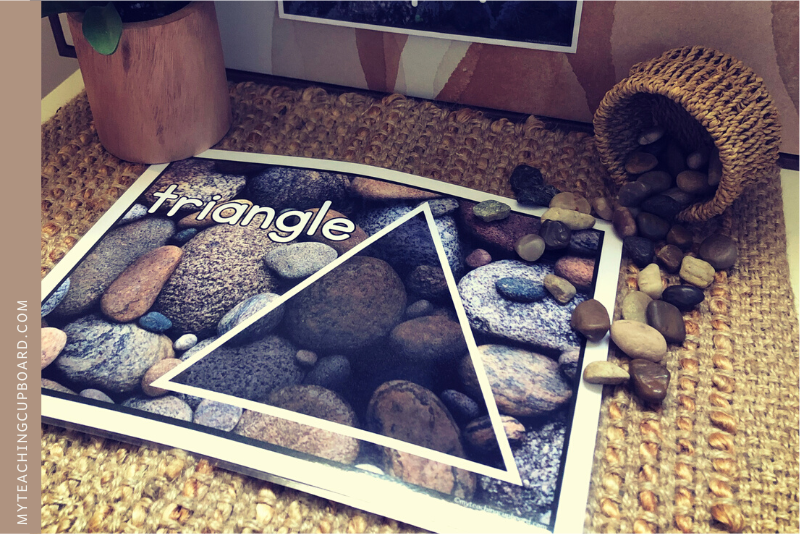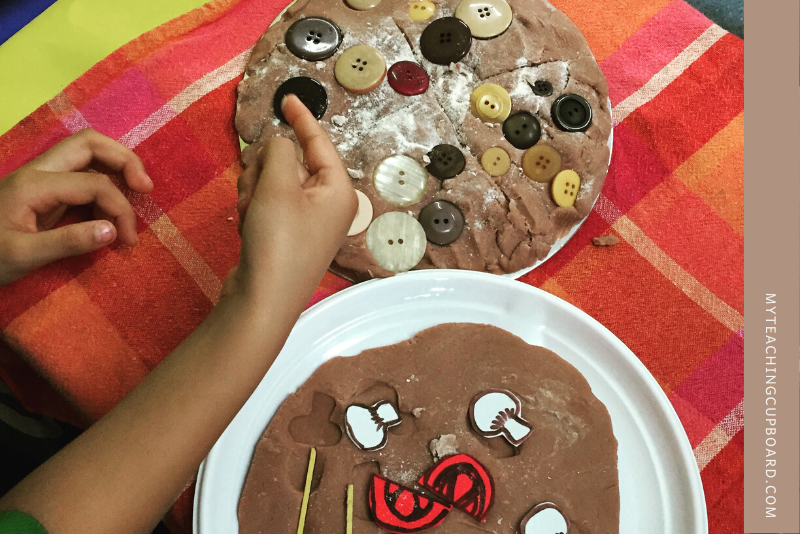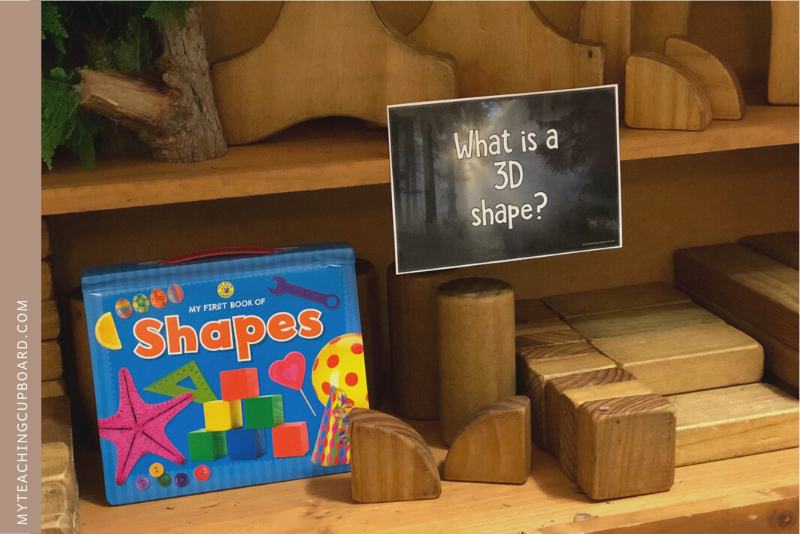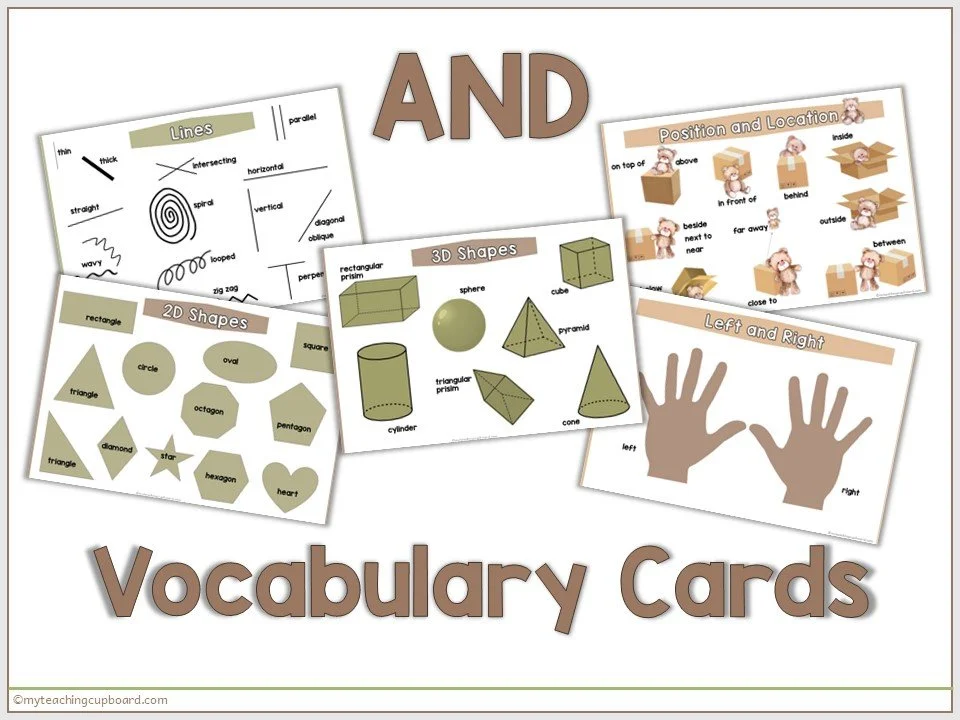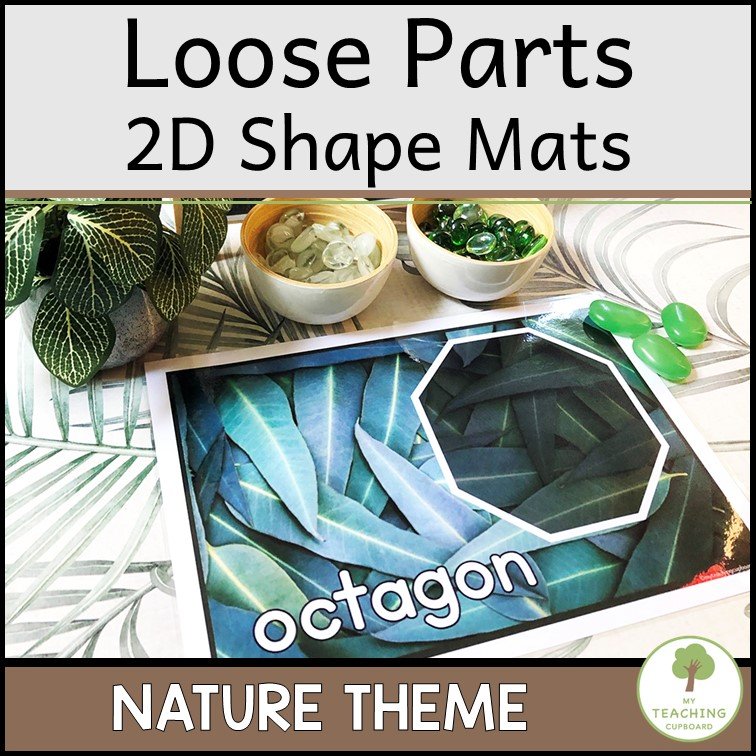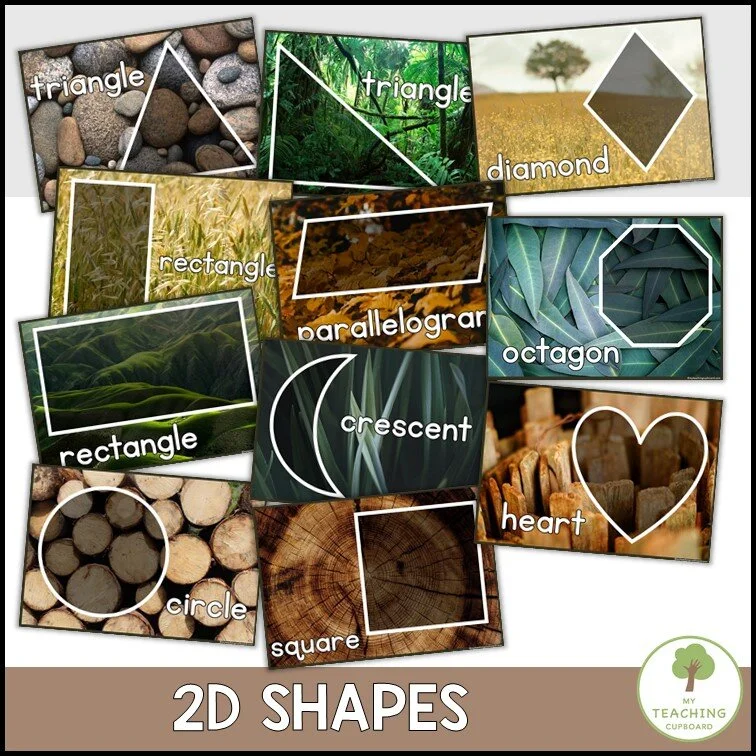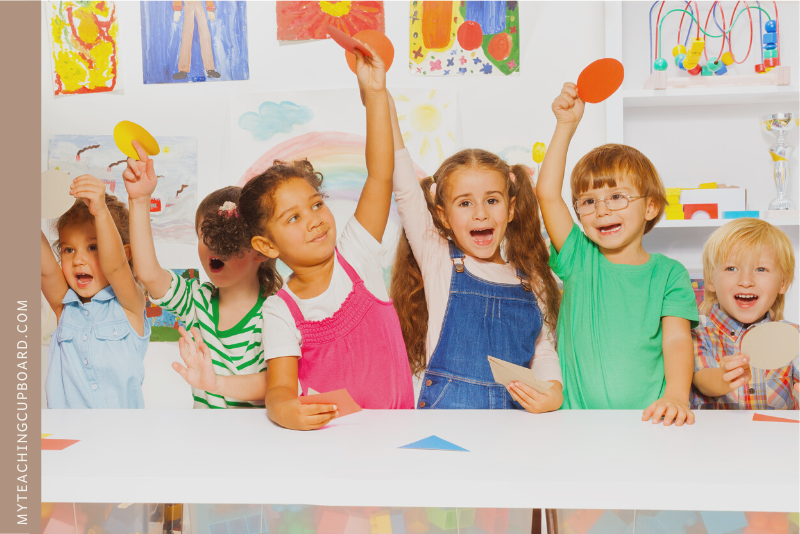Teaching Geometry in Kindergarten
How do you teach kindergarten geometry in a fun and engaging way?
Why do we even need to teach geometry in preschool and kindergarten?
This blog post will explain why it is so important to teach kindergarten and preschool children geometry and it will also explain the Australian Curriculum Geometry strand so you can be confident teaching this complex maths subject.
Preschool and kindergarten children learning geometry will need to learn a lot of new vocabulary related to 2D and 3D shapes along with movement language. Geometry for children can be a little overwhelming but some play-based geometry learning invitations will certainly help. Your students will be confidently discussing shapes, location, and transformation in no time.
Why is it Important to Learn Geometry in Kindergarten?
Learning all about geometry in kindergarten helps young children to identify and organise information visually.
Geometry also helps them to learn skills that can be transferred to other curriculum areas. Understanding shapes, for example, is a pre-requisite skill for learning to recognise letters and numbers.
Geometry skills and concepts play an important role in the Australian math curriculum. In kindergarten and preschool, your students will be forming the basic understandings needed to tackle this strand for the rest of their schooling years.
Learning geometry in the early years will ensure the necessary mathematical foundational skills are mastered. It’s important to create a strong foundation of geometry when children are in kindergarten because these foundational skills will be built upon each year with more difficult concepts being introduced at each grade level.
Geometry helps to build important higher-order thinking skills too. Children will develop their logical thinking, deductive and analytical reasoning skills, along with problem-solving skills.
The more hands-on learning opportunities you provide at this stage will ensure your students have the chance to explore and practice the necessary geometry skills needed to master the basics now and will also set them up for success in the next stage and grade too.
Australian Curriculum Geometry Skills
In the Australian curriculum, students are expected to develop an increasingly sophisticated understandings of size, shape, and relative position. They explore the movement of two-dimensional figures in the plane and three-dimensional objects in space. They also investigate properties and apply their understanding of them to define, compare and construct various figures and objects.
Geometry is an essential part of the Australian math curriculum.
The Australian Mathematics Curriculum is organised into three content strands. They are
Number and Algebra
Measurement and Geometry
Statistics and Probability
These content strands are intertwined and build upon each other. You don’t want to skip over any one of these content strands or your students will be left with gaps in their math skills and understandings. Developing geometry skills is just one part of an effective mathematics curriculum.
Measurement and geometry are presented together in the Australian curriculum. This is done to emphasise their relationship to each other. It is expected that your students will develop an increasingly sophisticated understanding of size, shape, position, and movement as they study the Measurement and Geometry content strand.
If you are interested in learning more about the ACARA Math Curriculum and how you can effectively teach all those math content descriptors through play, check out this blog post: Teaching the F-2 ACARA Math Learning Intentions Through Play Blog Post
This blog post explains in detail our F-2 ACARA Math Curriculum and it will show you how to teach ALL the math learning intentions through a play-based pedagogy.
Foundation Stage Geometry Skills
The Australian Curriculum outlines 2 content descriptors for the foundation stage geometry strand. You will need to provide learning experiences for your students to:
Sort, describe, and name familiar two-dimensional shapes and three-dimensional objects in the environment. (ACMMG009)
Describe position and movement. (ACMMG010)
So, in the foundation stage (kindergarten, prep, or preschool), the geometry skills you will teach should include:
Identifying shapes in the environment
Describing the features of familiar 2D shapes (square, circle, rectangle & triangle)
Sorting familiar 2D shapes
Naming 2D shapes
Describing the features of 3D objects and shapes
Naming 3D objects in the environment
Sorting 3D shapes (spheres, cubes, cones & pyramids)
Discriminating between 2 dimensional and 3 dimensional shapes
Describing the position of objects using the everyday language of location and direction, such as ‘between’, ‘near’, ‘next to’, ‘forward’ and ‘toward’, ‘left’ and ‘right’.
Describing movement
Following simple directions to follow a path
Giving simple directions to guide something or someone along a path
Learning About 2D and 3D Shapes
Learning about shapes is at its core, a skill of visual perception. The visual perception of objects begins to develop in babies and toddlers.
Babies can discriminate between familiar objects like people, pets, and household items. They can even identify these objects when they change position or location. Babies may not know the name of these objects, but they can certainly identify them.
When young children enter preschool and kindergarten, their visual perception is usually quite well developed. However, this is only the beginning of their geometry journey.
These young students will be learning the names of common 2D and 3D shapes (that’s the easy part of geometry in the early years) and they will also be tackling a much more difficult skill. In preschool and kindergarten, children will be learning how to analyse shapes according to their features.
Whether a shape is two-dimensional or three-dimensional is dependent on its features.
Two-dimensional objects only have two dimensions:
length, and
width.
Three-dimensional objects have three dimensions:
length,
width, and
depth.
The primary focus of the Australian curriculum Foundation level geometry strand is on the analysis of shapes, movement, and space.
Teaching about 2D and 3D shapes in the early years is quite complex. Your students will need to learn to analyze shapes, identify their defining properties, and be able to talk about them mathematically.
Learning About Position and Movement
Understanding position and movement is an important life skill. Because it is such a vital life skill, most children start preschool or kindergarten with basic spatial awareness concepts already in place. They will have pre-formed ideas about position and location, symmetry, and direction.
It doesn’t take a child in your class very long to work out where things are stored in the classroom and how to get to the resources they want. Most children will have already learned some mathematical language to describe position, location, and direction too.
Teaching position and movement in the early years isn’t quite as complex as 2D and 3D shapes but your students will still need to master both the mathematical metalanguage as well as the concepts.
How Do You Teach Geometry in Kindergarten?
Through fun hands-on age-appropriate learning experiences!
There’s no better way 😊
Teaching the Foundation stage Geometry concepts will mean you need to be teaching all the new mathematical vocabulary as well as providing plenty of opportunities for investigative play experiences involving shapes, position, and movement.
To begin teaching early years geometry concepts and skills, start by investigating what a shape is. Discuss the features of 3D objects and 2D shapes. Explore positional language and describe the location of objects.
Teach your little ones how to directly compare 2 shapes or objects before moving them on to any form of sorting and classification of 2D shapes and 3D objects.
You will find your students naturally love learning about shapes, position, and location through hands-on activities and real-world experiences. Play-based learning will provide your students with purposeful opportunities to learn and practice many geometry skills.
When children are given opportunities to explore geometry concepts through hands-on playful investigations and learning provocations, you will observe them building their skills, understandings, and geometry knowledge.
Use these rich hands-on experiences to scaffold their learning by asking intentional questions about geometry. For example:
in the blocks area, you can ask, “Which block has a square face?”
in the dramatic play space, you might ask, “Where do we keep the baby dolls?”
or at the collage area, there will be opportunities to discuss the shapes and locations of the various collage supplies.
Some of my favourite open-ended geometry questions to scaffold thinking and learning are:
How do you know this is a square?
Can you tell me more about that location?
How many different shapes can you see here?
What happens if you put those shapes together?
How are these the same? How are they different?
How can we compare these shapes?
The list of questions you can ask is endless and dependent on the skills and understandings of your students. Questions like these are important in play-based learning investigations because they help your young students to verbalise their thinking and challenge them to think about geometry in different ways.
The opportunities to embed geometry vocabulary and provide purposeful learning experiences are endless in a play-based learning environment. Providing your students with a variety of geometry resources and some learning prompts will help your students naturally incorporate more geometry learning into their play.
Resources for Teaching Geometry in Preschool and Kindergarten
Here are some of the resources we use the most in our kindergarten and preschool geometry investigations and lessons.
7 Tips for Teaching Geometry in Kindergarten
To have success in teaching geometry in the early years, remember to:
Provide authentic and real-life experiences through hands-on activities.
Timetable in time for your students to explore geometrical manipulatives and geometry toys.
Intentionally use any new mathematical language frequently.
Encourage mathematical thinking by teaching your students to use math vocabulary and to talk about and explain their thinking when they are using the geometry resources.
Provide manipulatives instead of paper and pencils or worksheets for problem solving and geometry lessons.
Allow time for children to compare and discuss their work and their thinking with their peers.
Ask open-ended questions when teaching about shapes, position, and movement.
Geometry Activities for Kindergarten and Preschool
If you are looking for some fun hands-on activities to help you teach geometry to your early childhood students, you might be interested in these play-based learning math activities.
Your children will love any of these 49 fun hands-on geometry activities. They are highly engaging, purposeful and age-appropriate.
These 49 Geometry provocation prompts teach ALL the Geometry content descriptions for Kindergarten ACARA Foundation Stage.
Make your play-based math learning centers or investigation areas so quick and easy to set up with these engaging hands-on learning invitations.
The provocations address 2D and 3D shapes, lines, position, and location.
Download this pack now to receive:
33 Provocation prompts for describing and naming familiar two-dimensional shapes and three-dimensional objects in the environment. (ACMMG009)
16 Prompts for describing position and movement. (ACMMG010)
10 reproducible recording sheets to fit A5 clipboards
Instructions to tile print the prompts so you can change the printout size to suit your centers
Inspiring photos for ideas on how to set up your learning invitations
Lists of possible hands-on resources you can add to each center
PLUS BONUS vocabulary cards
All the math provocation prompts you need to set up hands-on GEOMETRY investigation areas in your kindergarten classroom.
Easy to Prep and Organise Geometry Kindergarten Learning Activities
There’s a total of 49 different provocation prompts in this pack. All ready for you to print onto A4-sized card or paper. There is one prompt to each A4 sheet. Instructions are also included for the option to print 2 or 4 to each sheet.
They make it really easy to prepare and set up aesthetically pleasing and educational math investigation areas. Just print them out and include one or two of these geometry prompts along with some related math manipulatives, and you’ll be taking your student's mathematical thinking to the next level.
You can grab a FREE sample of these prompts HERE in my Free Resources Library.
Teach 2D Shapes with Loose Parts Play
Use these Reggio-inspired loose parts mats to explore and teach common and uncommon 2D shapes in a play-based, hands-on way.
These beautiful nature themed mats feature 24 different 2D shapes.
The 2D shapes included in this geometry resource are: rectangle, square, triangles, circle, oval/ellipse, pentagon, hexagon, heptagon, octagon, decagon, dodecagon, trapezoid, parallelogram, diamond/rhombus, heart, star, crescent & arrow
THIS GEOMETRY RESOURCE CONTAINS:
A List of 60 loose parts ideas (like stones, counters, play dough, math manipulatives, etc)
Instructions to tile print the mats so you can change the print-out size
2 learning 2D shapes provocation prompts
24 different shape mats—labelled
The learning prompts and number mats are in A4 size and feature high quality nature photographs.
PERFECT FOR:
small group math rotations
independent work
early finishers
busy bags or math trays
numeracy centers or investigation areas
Linked to these ACARA Content Descriptions:
Sort, describe, and name familiar two-dimensional shapes and three-dimensional objects in the environment (ACMMG009)
Recognise and classify familiar two-dimensional shapes and three-dimensional objects using obvious features (ACMMG022)
Sort and classify familiar objects and explain the basis for these classifications. Copy, continue, and create patterns with objects and drawings (ACMNA005)
Now you know all about the Australian Curriculum Geometry strand and why it is an important part of our math curriculum. I hope you have discovered some tips and ideas to help you confidently teach Geometry to your kindergarten and preschool students.
If you found this blog post on teaching geometry in kindergarten useful, please consider sharing it. Just CLICK the sharing box below.👇

